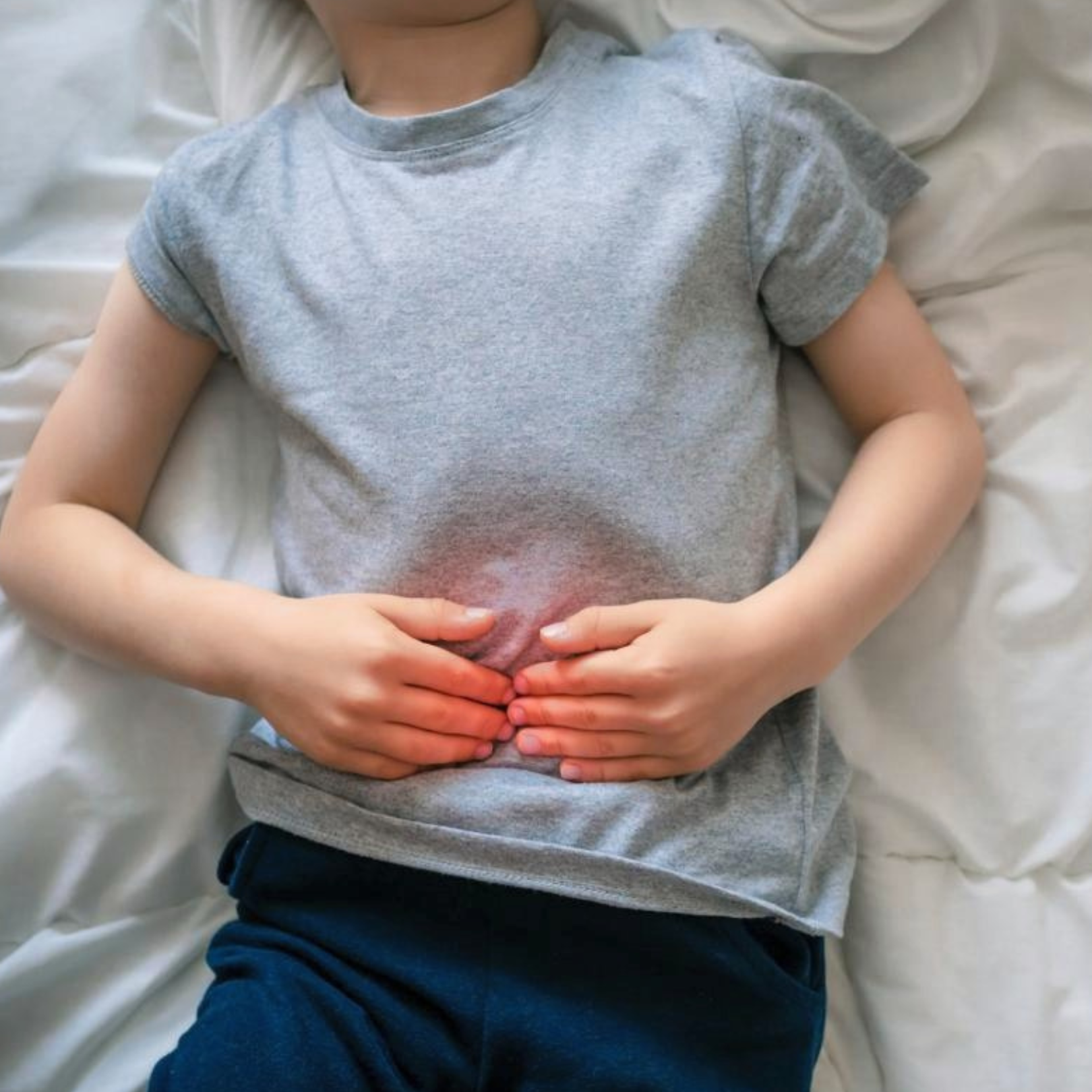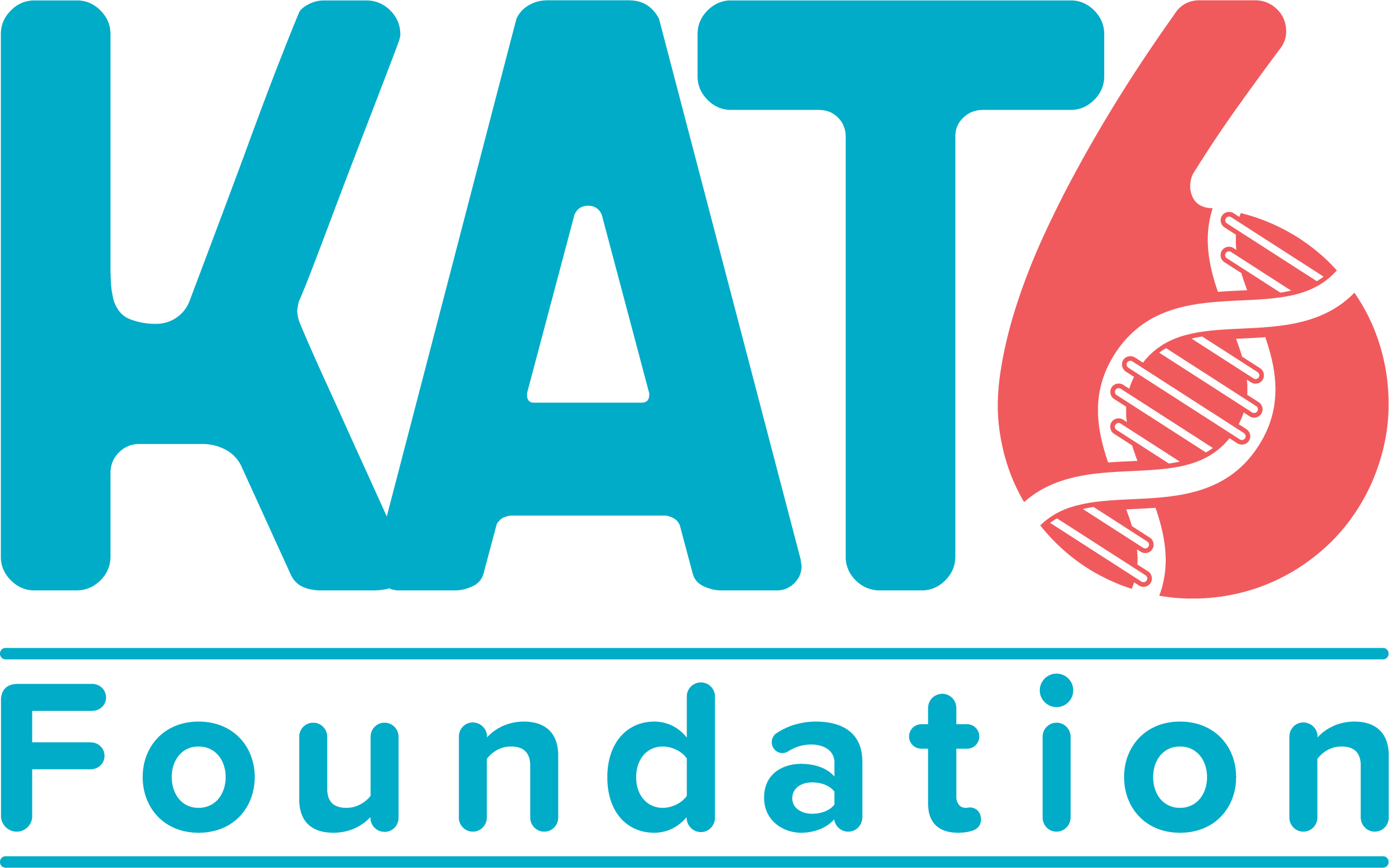
by David A. Woodbury
Parents and caregivers of children or adults with KAT6 disorders are the first to recognize whether the person they care for is in distress. Those continually looking after the person’s needs are the best ones to intervene and advocate for medical care when it appears that a problem is present and getting worse. But what are we looking for and when might it call for emergency care?
INTESTINAL BLOCKAGE
Gastrointestinal issues are common with KAT6 disorders. Low muscle tone throughout the body may mean low motility in the gut — weak contraction of the muscles that mix and propel contents in the gastrointestinal tract. When there is a temporary lack of normal muscle contractions of the intestines this is known as ileus — not a blockage, but a stoppage. (Think of a blockage as a train wreck, preventing any other train from passing through, and think of a stoppage as merely a train sitting on the tracks and failing to move along.)
When the contents of the upper or lower bowel cease to move, the resulting mass can become enlarged and can harden as it dries out, stretching the part of the intestine where the mass occurs. Regular contractions can return and eventually move it along, but if the contents sit too long they can begin to ferment and decay, with potentially serious results. Vomiting and diarrhea, for example, are normal consequences once the body applies its other resources to the obstruction.
If it does not eventually start moving on its own it may respond to non-invasive treatments such as stimulants taken orally or a rectal enema, depending on proper assessment of the location of the problem. But if there is a physical barrier to continued movement of intestinal contents, the problem can quickly become life-threatening.
MALROTATION AND VOLVULUS
Around the tenth week of gestation, as the intestinal tract is developing, it normally moves from the base of the umbilical cord into the abdominal cavity. As the intestine descends into the abdomen, it makes two rotations and settles into its normal position. When a portion of the intestine, or even the entire intestinal tract, fails to lie properly in this space, it ls known as a malrotation.
A malrotation may cause immediate symptoms and problems after a baby is born or may lead only to intermittent trouble, or it may cause no problems at all. In some people it is not discovered until well into adulthood or perhaps never discovered at all. In others, it can be the source of repeated obstructions. The point is, a malrotation is an anatomical defect and one that must be suspected if problems arise, especially in early childhood. It can lead either to continuous or intermittent problems but is not necessarily dangerous.
When a loop of intestine and the membrane that holds it in place twist around each other like sausage links or a kinked garden hose, this causes a bowel obstruction called a volvulus. A certain kind of volvulus in a horse is commonly called a torsion. It is not going to clear and open back up on its own, and normal muscle contractions in the gut are not going to force a trapped mass of intestinal contents to move past it.
The trapped material, already partially digested, continues to break down, though, and some contents may be ejected as diarrhea or gas, while most of it will remain and swell the gut. A person suffering a volvulus, who enters emergency surgery soon enough, may still lose part of the intestinal tract in surgery. Without emergency surgery a volvulus is almost certain to be fatal.
If a volvulus is suspected in an emergency room, a buildup of gas in the intestine may show up on a series of x-rays, which must be taken at intervals long enough for changes to appear but no so long that surgery comes too late.
OTHER GI ISSUES
The esophageal sphincter is the valve between the esophagus and the stomach. When the muscle that keeps this valve closed is weak, a blast of burning stomach acid may rise as far as the throat. This is acid reflux. A baby with KAT6A or KAT6B can be resting quietly in a baby seat, alert and cheerful, and suddenly scream in pain and terror. If this happens with any frequency, reflux should be suspected when nothing else is likely.
Dumping syndrome is a group of symptoms, such as diarrhea, nausea, and feeling light-headed or tired after a meal, that are caused by rapid gastric emptying, a condition in which food moves too quickly from the stomach to the duodenum. This can become an issue after a person has undergone GI surgery. Adjustments in diet or medicine can resolve things, and, if surgery was involved, time may be the best healer.
OUR NEED TO REMAIN VIGILANT
Communication problems are common with the KAT6 population as well as an apparent high tolerance for pain. Children and adults with KAT6 disorders, especially those who can’t tell us that something hurts or where it hurts, need to be monitored continually for lack of gut movement. Constipation, (a general term for any disruption of intestinal activity that leads to pain and irregularity of bowel movements), can make a normally cheerful person irritable.
A volvulus is a rare occurrence in the general population, but among the KAT6 population it seems common enough to be of serious concern. Although we are still studying the matter and don’t have statistics, it appears that untreated bowel obstructions are the leading cause of death among children affected by KAT6 disorders.
Many of those with KAT6 disorders are tube-fed through a gastrostomy. For some, this is their only source of nutrition, and so variations in gastrointestinal activity are less likely to be caused by daily changes in diet.
What is the person’s normal frequency of bowel movements? Has it been a day longer than normal? Two days? Is she also becoming irritable, combative, unable to sleep? Does this happen in repeating cycles? What does her blood work show? What does a gastroenterologist say? Do cycles of irritability correlate with cycles of unusual toilet contents? Someone close to the patient needs to be asking these questions and insisting on answers.
People with KAT6 disorders may show no signs of a bowel obstruction until it has progressed to a serious degree. They may quietly tolerate the increasing pain until it has become severe. An obstruction can go from bad to dangerous quickly. It is hard to differentiate an obstruction from other gastro-intestinal issues. Obstructions can happen again and again and can strike at any age.
While it is probably more likely to become an issue early in a child’s life, an affected person who has a KAT6 disorder can seem to be OK for years, perhaps irritable at times for no apparent reason. Just because it hasn’t been diagnosed at an early age it could be that a complete obstruction simply hasn’t happened yet. The best prevention of complications is be on top of it all of the time. Not all doctors understand that, with a bowel blockage, you can still pass diarrhea — the assumption seems to be that if they’re passing anything at all then there’s no obstruction.
Medical services vary from country to country, and while another country may have excellent hospitals and perfectly competent doctors, they may also have different approaches to parent involvement, different protocols for intervention, and different standards for what can and should be treated.
Compounding the danger, a doctor may not consider an intestinal obstruction if a parent or caregiver hasn’t suggested it, and so a doctor wants to ascribe a change in behavior to anxiety, a virus, a food allergy, and so on. Meanwhile the child has mere hours to get the problem resolved or else irreversible damage has been done with a high potential for fatal results.
LIVING WITH IT
We aren’t supposed to tell people about our poop or ask others about theirs. With KAT6 in a family we could save a life if we get beyond that taboo. In our own experience, Beth and I share in all phases of the care of our son, Sam, who is now 32 years old. He is one of the more severely disabled individuals with KAT6A syndrome, and so we must pay constant attention to all the signs he gives us. We “read” his behavior, we both examine his bowel movements daily or at least describe to each other what he has done. (He even has an “I POOPED TODAY” T-shirt.)
Sam has had a gastrostomy and feeding tube since he was a baby and receives all medicine and sustenance through the tube. He had a nissen fundoplication during his first surgery as a baby, so he cannot burp or vomit. He had a malrotation of the duodenum at birth (corrected by surgery), reflux as a baby, a volvulus before he was two (indicated by changes in a gas pocket on successive x-rays), a second near-fatal obstruction due to adhesions, and numerous instances of ileus and other partial obstructions requiring hospital stays. As an adult he is now treated for ulcerative colitis. He does not walk and can’t speak. But he is engaging and even mischievous, affectionate, enthusiastic, and popular. When he hurts, his only ways to show it are in withdrawal, resistance, and restlessness.
We are fortunate that Sam has had doctors who care about him as a person and who listen to us, his parents. His doctors, though, need to trust what we are telling them, and so our information must be reliable. By educating ourselves, paying close attention to the signs that Sam gives us, and making sure we communicate consistently and accurately with medical providers, we have been Sam’s best advocates.
